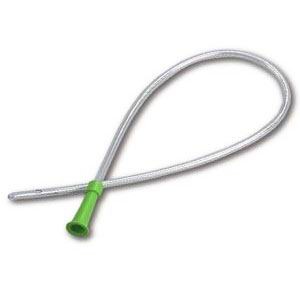 Urinary catheterization is a type of procedure primarily aimed to drain urine from the bladder or to collect a sample sterile urine. Health care professionals should insert some types of male urinary catheters; nonetheless, you can do catheter self-insertion in a sterile and safe environment. The instruction given below may help in serving as your guide for self-catheterization. We recommend however that you let your primary health care provider to demonstrate the insertion process before attempting to do it yourself. Additionally, you should bear in mind that there are different varieties of male catheters requiring different insertion techniques.
Urinary catheterization is a type of procedure primarily aimed to drain urine from the bladder or to collect a sample sterile urine. Health care professionals should insert some types of male urinary catheters; nonetheless, you can do catheter self-insertion in a sterile and safe environment. The instruction given below may help in serving as your guide for self-catheterization. We recommend however that you let your primary health care provider to demonstrate the insertion process before attempting to do it yourself. Additionally, you should bear in mind that there are different varieties of male catheters requiring different insertion techniques.
It is critical that you ensure sterility of your work area as well as your instruments during the whole procedure when attempting to perform self-insertion of a urinary catheter. Your bladder and urethra are sterile areas. Hence, not properly cleansing your genitals or using a contaminated catheter may introduce opportunistic bacteria that may cause urinary tract infections.
In initiating the male urinary catheterization procedure, use sterile gloves and follow the steps below.
1) Retract the foreskin of the penis.
2) Dilate the prepuce to expose the urethra.
3) Cleanse the urethral with aseptic swabs.
4) Anesthetic gel may be introduced onto the glans penis and urethra to decrease discomfort.
5) Lubricate the catheter (about 8 inches).
6) Straighten the urethra by grasping the penis, pulling it into an upward position.
7) Insert the lubricated catheter into the penis whilst making sure that you are inserting it in a smooth, continuous motion.
8) Advance the urinary catheter forward until you see urine backflow.
9) Collect the urine specimen or drain the bladder into a container or drainage bag.
If you are inserting a male Foley or indwelling catheter, you should advance the tubing for 2 more inches after seeing urine backflow. This is to ensure that the balloon is in the bladder. You can now inflate the balloon using a sterile water to anchor the catheter in place. Connect the catheter in a drainage bag and attach or fasten it to the patient’s outer thigh. You should slightly curve the catheter tubing using a tape or hypoallergenic adhesive device.
Other types of male catheters are available. These include internal and external catheters as well as disposable and reusable ones. Internal catheters include those that can be retained in the bladder over a period of time to drain urine or those that are referred to as “in and out” catheters.